
Blonde ray
Ray is a cartilaginous fish from a particularly large family. There are about 460 different species worldwide.
Other well-known species are the thornback ray (Raja clavata), the sand ray (Leucoraja circularis), the big-eyed ray (Leucoraja nevus) and the spotted ray (Raja montagui).
Together with plaice and sole, ray is an extremely important fish species for our fishermen. These three toppers account for the majority of the supply to our fisheries.
Source: Lekkervanbijons.be
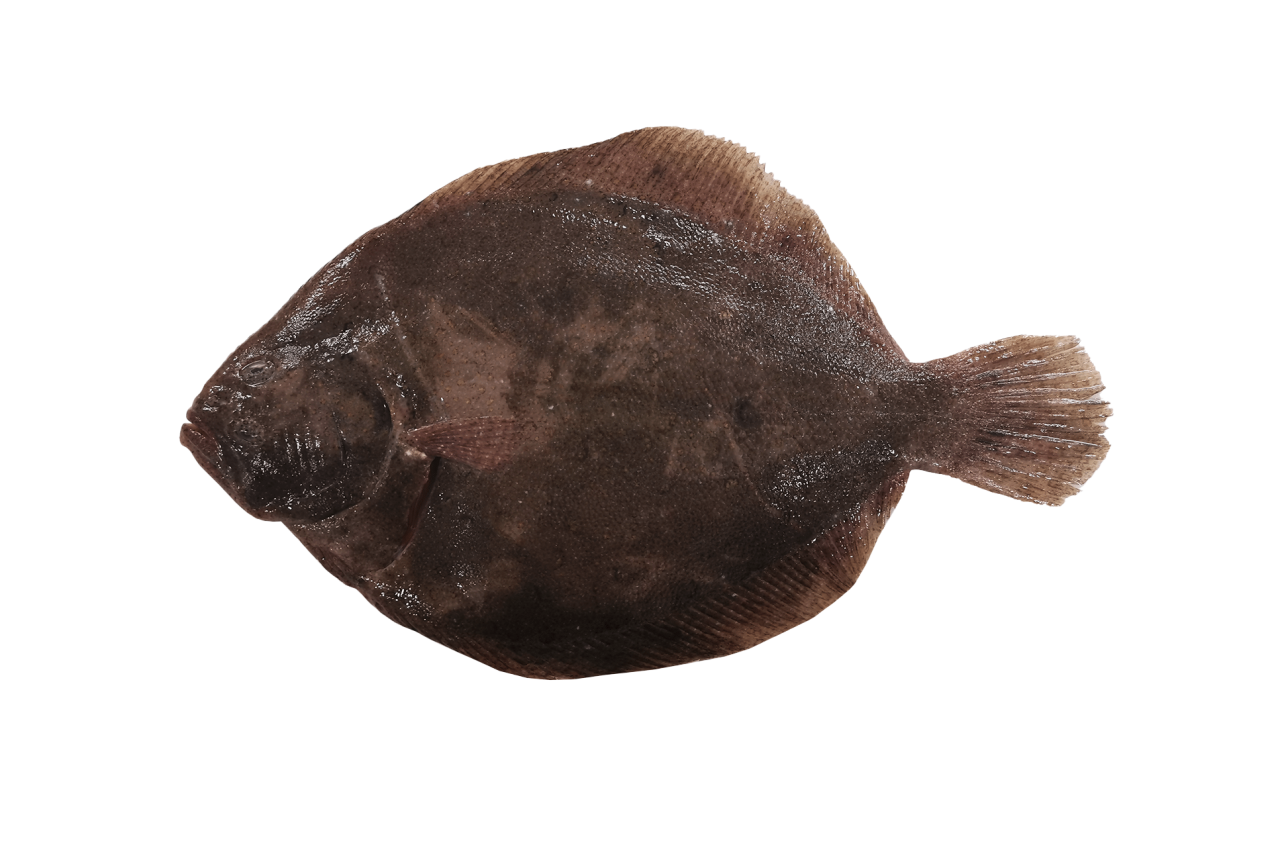
Brill
Brill is a bony fish that can be characterized as a flatfish. Like megrim, this grey-brown fish belongs to the turbot family. Both eyes are on the left side of the body. Brill also resembles turbot, but has more of an oval shape. And unlike turbot, it has scales instead of subcutaneous bony nodules.
It lives in various places: from the north of Norway to Moroccan waters, and from the Mediterranean to the Black Sea.
They are paratroopers of the water, masters of camouflage, as they take on the colour of their environment.
Source: Lekkervanbijons.be
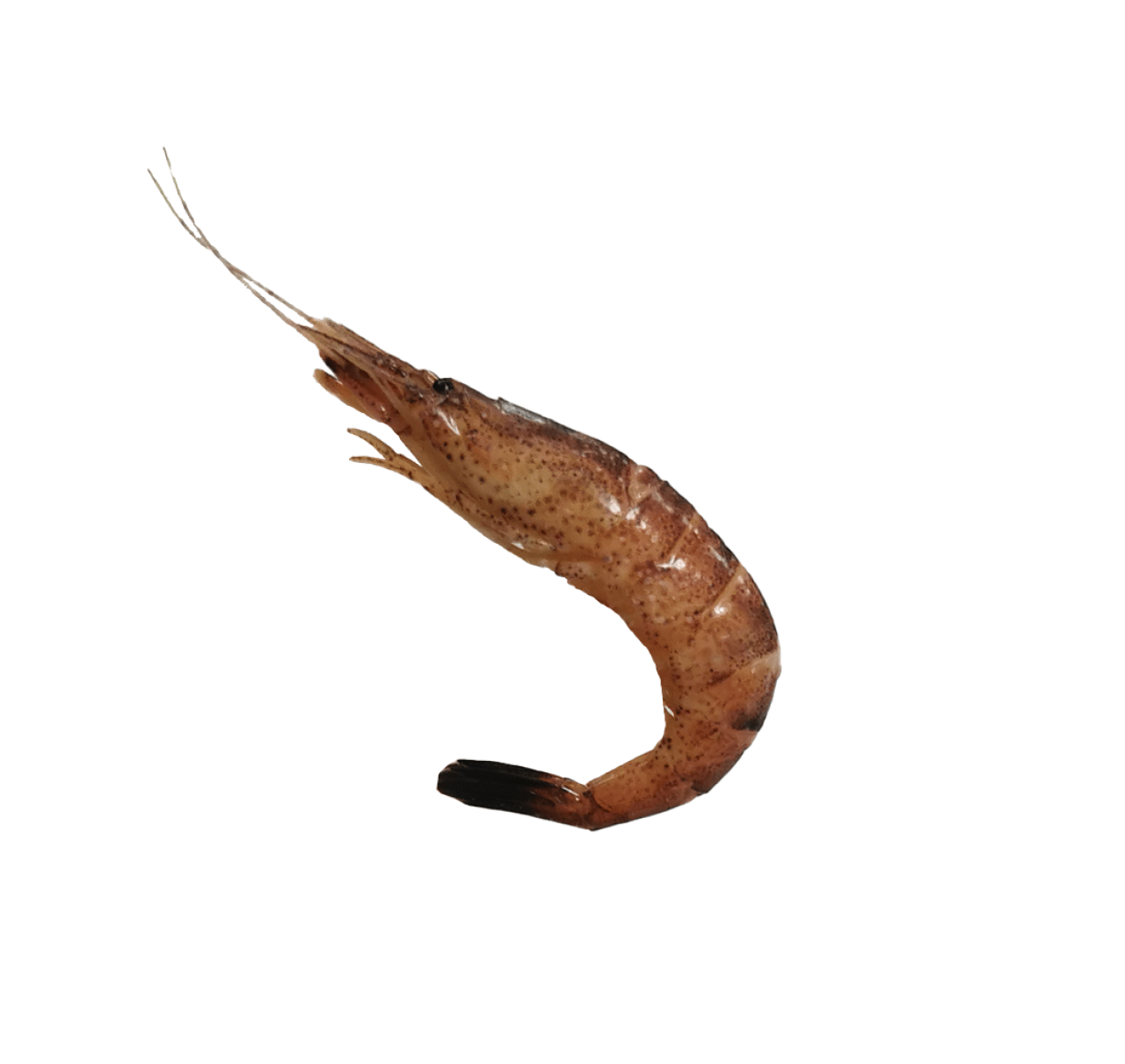
Brown shrimp
The North Sea shrimp belongs to the Crangonidae family, or sand shrimp. It has a translucent body, gray-brown in color and can live up to three years. The average length of the shrimp is 4.5 cm, but it can grow up to 9 cm long.
During the day the shrimp burrows in, only the eyes and antennae protrude above the sand. At night it takes on a dark camouflage and goes in search of food.
The females lay thousands of eggs two to three times a year. Breeding success varies greatly from year to year. And so are the catches.
Shrimp can be found from Norway and the North Sea to Portugal and southern Spain. Even in the Mediterranean and the Black Sea there are shrimps. In Belgium shrimp fishing is mainly reserved for coastal fishing.
Source: Lekkervanbijons.be
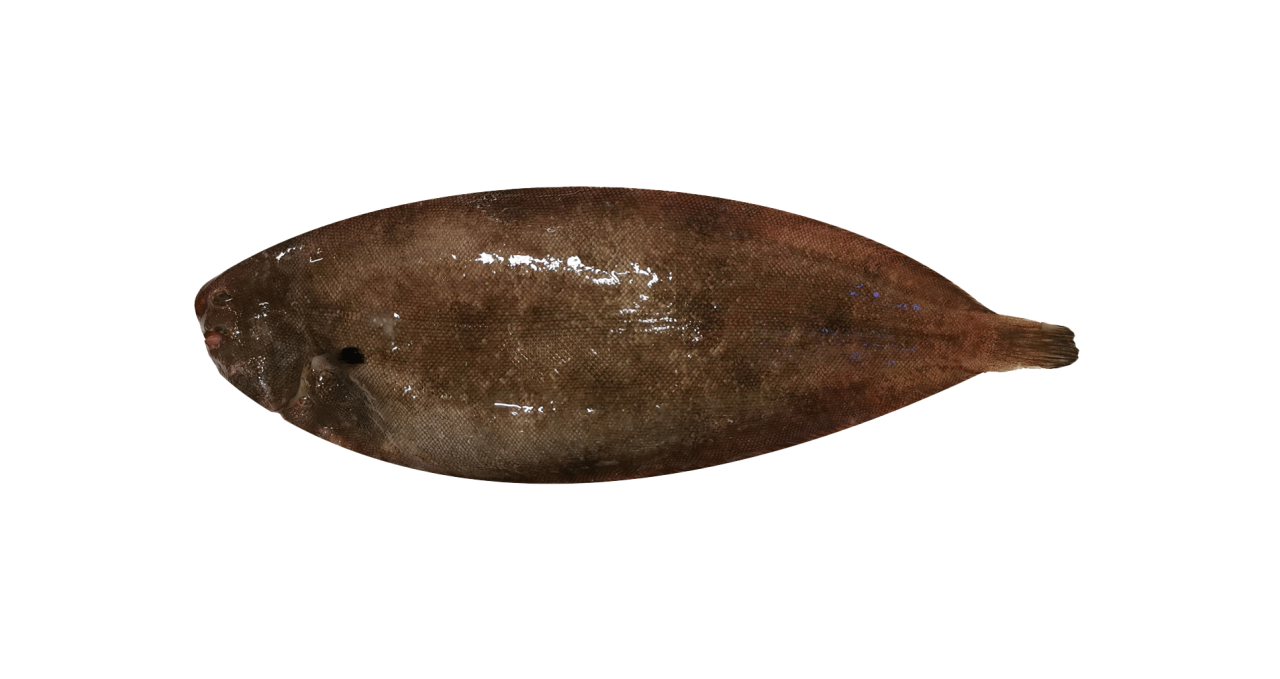
Common sole
Sole is a bony fish that belongs to the order of the flatfish and is related to the sole family. They live from the Norwegian Sea to the Senegalese waters. And also in Mediterranean and Black Sea.
Commonly, the sole is also sometimes called North Sea sole or silt sole.
Sole, together with skate and plaice, is an extremely important fish species for our fishermen. These three toppers account for the majority of the supply to our fisheries.
The small eyes of the tongue are on the brown pigmented right side of the fish, just above the small mouth, the skin feels rough. On their white side they have a 'beard' around the mouth with which theyuse to feel the movement of prey under the sand.
Adult fish have a length of 24-30 cm depending on the habitat. In the North Sea they weigh 160 g and in the Bay of Biscay up to 200 g. Tongue can weigh 2 kg and live up to 20 years.
Source: Lekkervanbijons.be
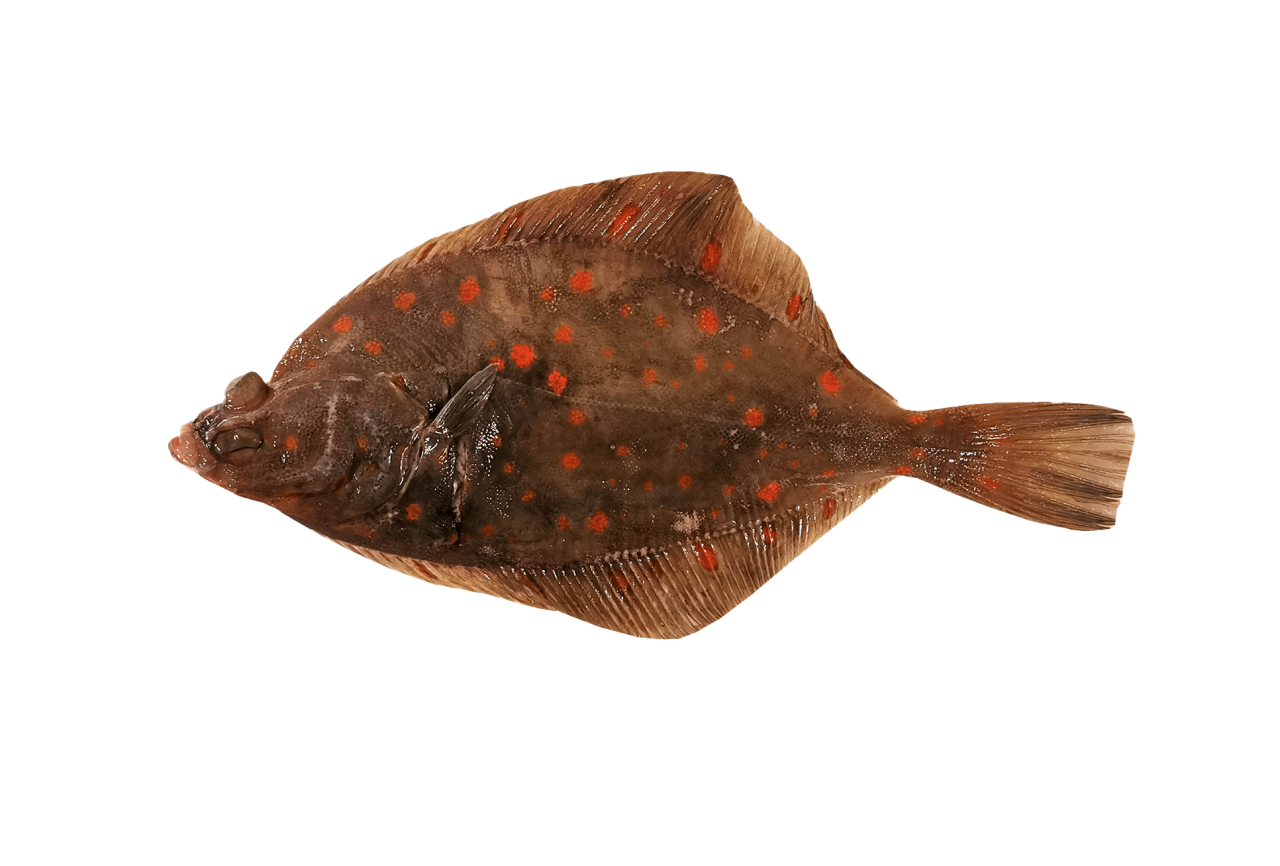
Flounder
Flounder is a bony fish that belongs to the flatfish family. The two eyes are located on the right side of the coloured-body. The skin is smooth and the lateral line above the pectoral fin is almost straight. It is characterized by red-orange spots on its brownish-green face.
In common parlance, flounder is also called plaice, plate or ploate.
Along with skate and sole, flounder is an extremely important fish species for our fishermen. These three main species represent the major part of the supply of our fisheries.
This flatfish lives from the north of Norway to the waters of Portugal and also in the Baltic Sea, but not in the Mediterranean Sea.
Source : Lekkervanbijons.be
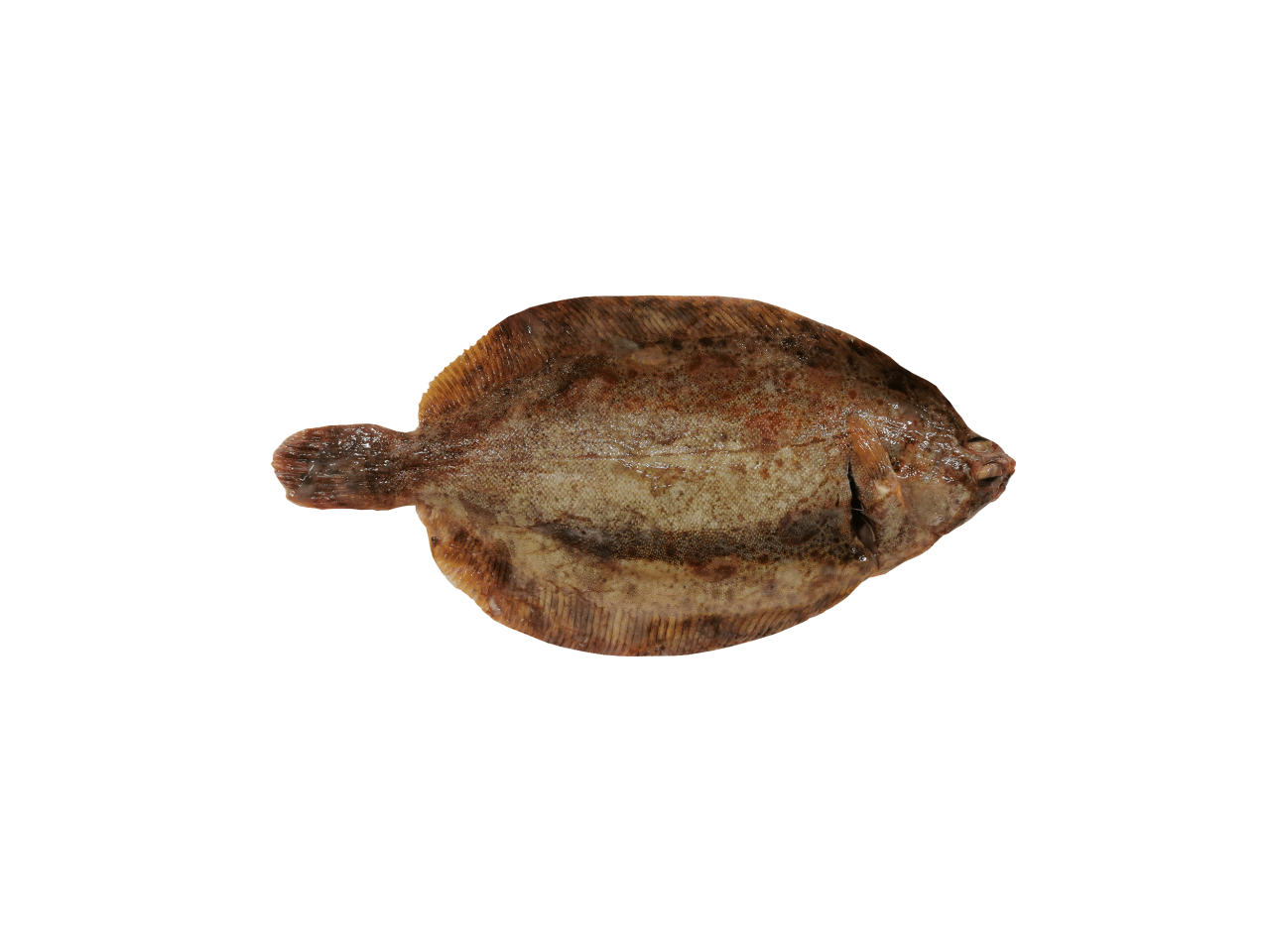
Lemon sole
The lemon sole is a bony fish that belongs to the order of flatfish and is part of the plaice family. It is found from Iceland and northern Norway to the Bay of Biscay and the Baltic Sea.
The lemon sole has an oval body, with a small head and a small mouth. Both eyes are located on the marbled right side. It closely resembles the common dab (Limanda limanda), but has smoother and more slippery skin, with many shades of reddish-brown, orange, and pink, along with yellow-green spots. Adult fish range from 17 to 24 cm in length. The lemon sole can grow up to 70 cm long.
Source: Lekkervanbijons.be
Monkfish
The monkfish is a bony fish belonging to the order Lophiiformes. It can be found from the Barents Sea down to West Africa, as well as in the western Mediterranean Sea.
In the northeastern Atlantic Ocean, there are two species of monkfish: the common monkfish (Lophius piscatorius), mainly found in the North Sea, and the black monkfish (Lophius budegassa), which lives in more southern waters. They can be easily distinguished by the color of their peritoneum: it is white in the common monkfish and black in the black monkfish — a very fitting name indeed.
They are poor swimmers, which is quite a disadvantage for a fish. To feed, they lie in ambush on the sea floor, at depths ranging from 100 to 1000 meters. Their dorsal fin is equipped with a kind of “fishing rod with bait,” which they use to lure prey. In the common monkfish, this lure splits at the end into two small flaps, while in the black monkfish it ends in a single point.
Adult common monkfish measure between 50 and 70 cm, with tails reaching 30 cm or more. They can grow up to 2 meters in length, though they are usually about one meter long, head included.
Source: Lekkervanbijons.be
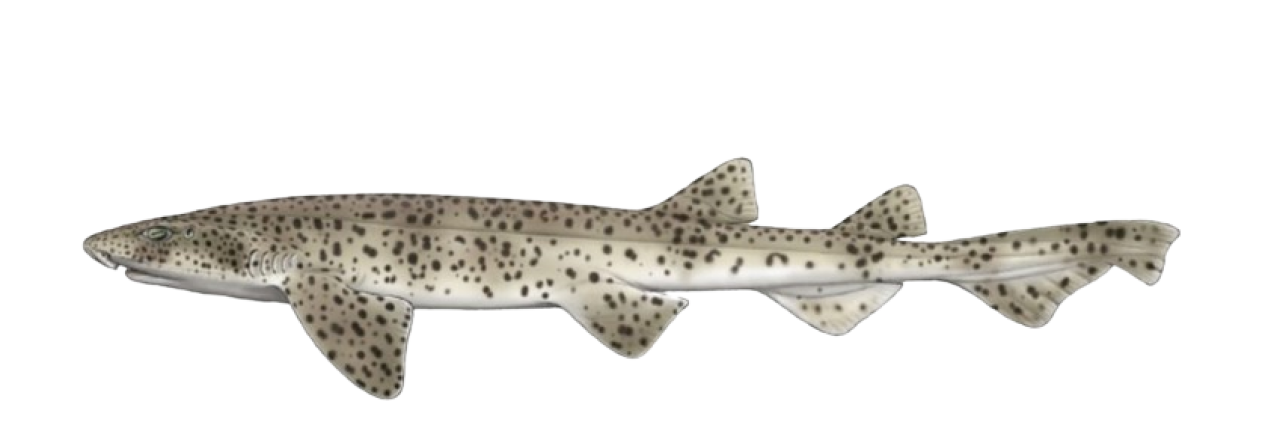
Nursehound
The Nursehound is a small, bottom-living shark species found in the eastern Atlantic Ocean, from Norway to Morocco, and in the Mediterranean Sea. It can grow up to 1.6 metres long and has a slender, streamlined shape with speckled skin in shades of brown, which camouflages it well. Nursehounds usually live on rocky and sandy bottoms at depths of up to 100 metres. It mainly feeds on small fish, crustaceans and molluscs. This shark lays eggs in characteristic, rectangular shells that are also called ‘mermaid wallets’. The nursehound is harmless to humans and is known for its restrained behaviour.
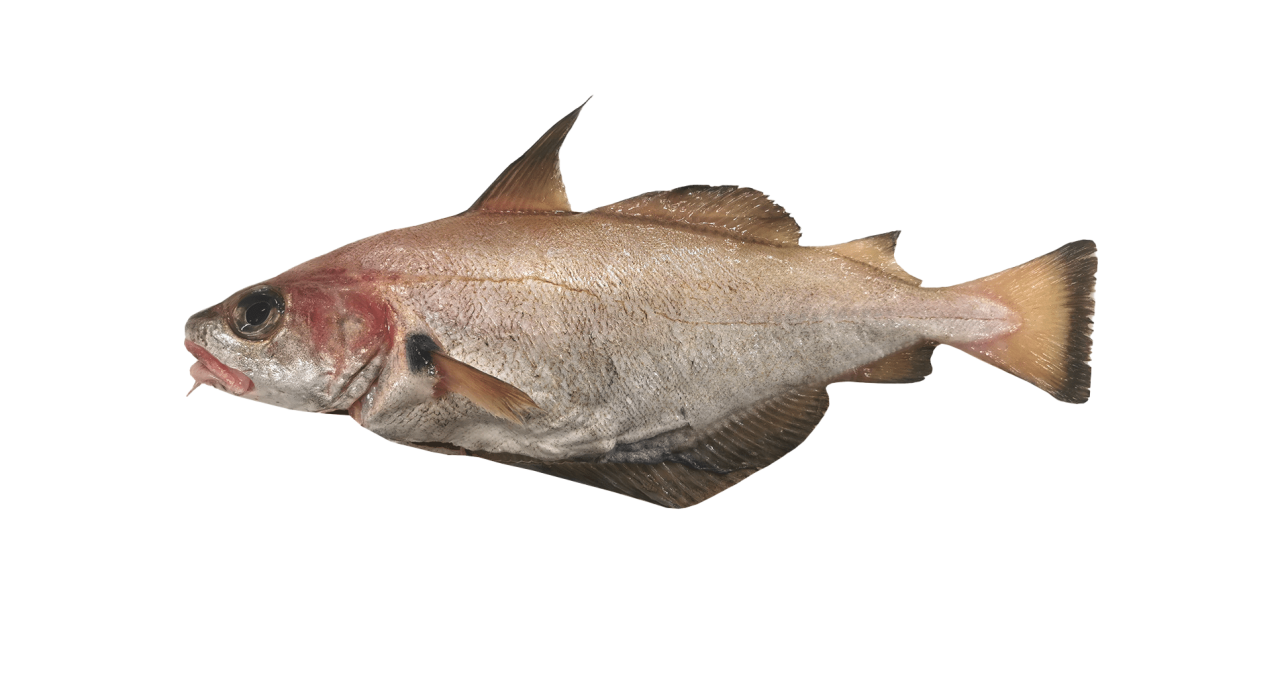
Pout
Pout is a bony fish that belongs to the family of codfish. You can find them around southern Norway to the Moroccan waters. This species appears to be a fan of renewable energy. They prefer wind farms as nurseries and it remains their favorite spot during the first two years of their lives.
Like other species within the cod family, pout have three dorsal fins and two ventral fins. Both pelvic fins are fused: when you straighten the front pelvic fin, the rear one comes along. You can recognize the pout by a long child-like thread and a black spot where the pectoral fin attaches to the body. Pout looks somewhat like whiting, but the body is taller and heavier in shape. The adult has a length of 25 cm, but can grow up to 45 cm long.
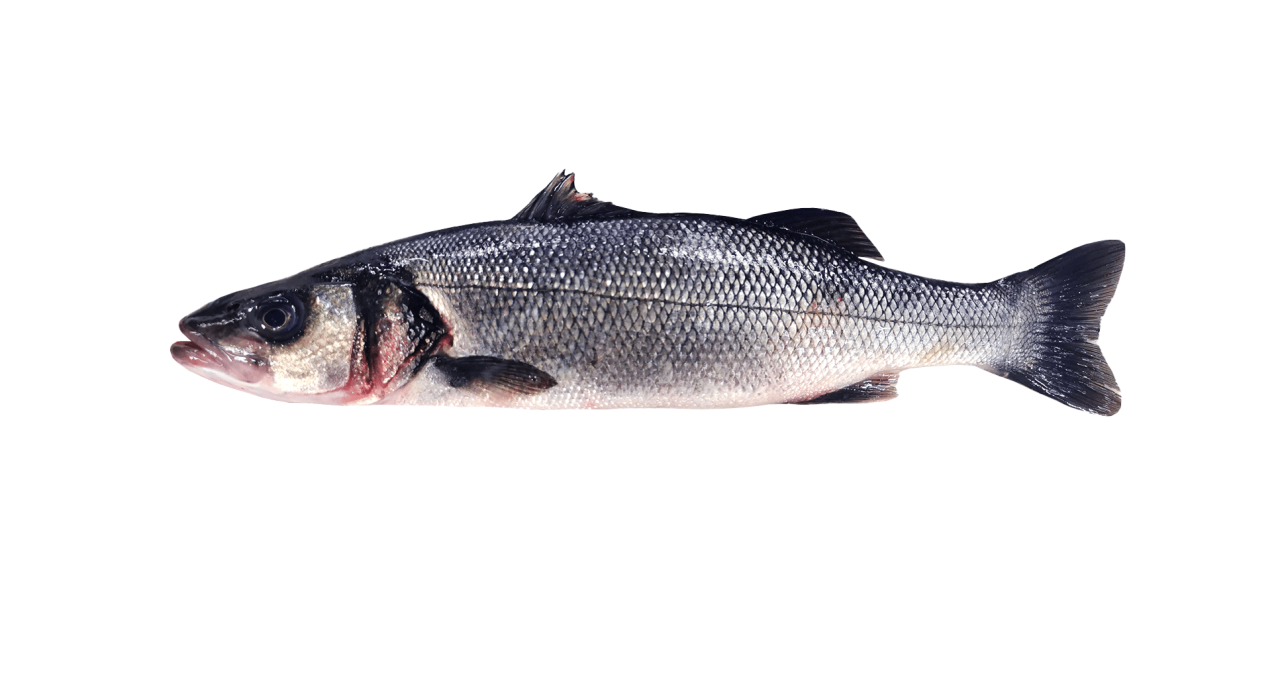
Seabass
Sea bass is a bony fish that belongs to the order of the perciformes and is related to the moronidae. They inhabit Norway and Iceland to Morocco and Canary Islands. You can also find them in the Mediterranean and Black Sea.
Sea bass has a streamlined body with a gray, silver back and white belly. They have large regular scales and a spiny dorsal fin. Adult fish have a length of 40-42 cm and then weigh about 750 g. Sea bass can reach 10 kg and can grow 25 years old.
Source: Lekkervanbijons.be
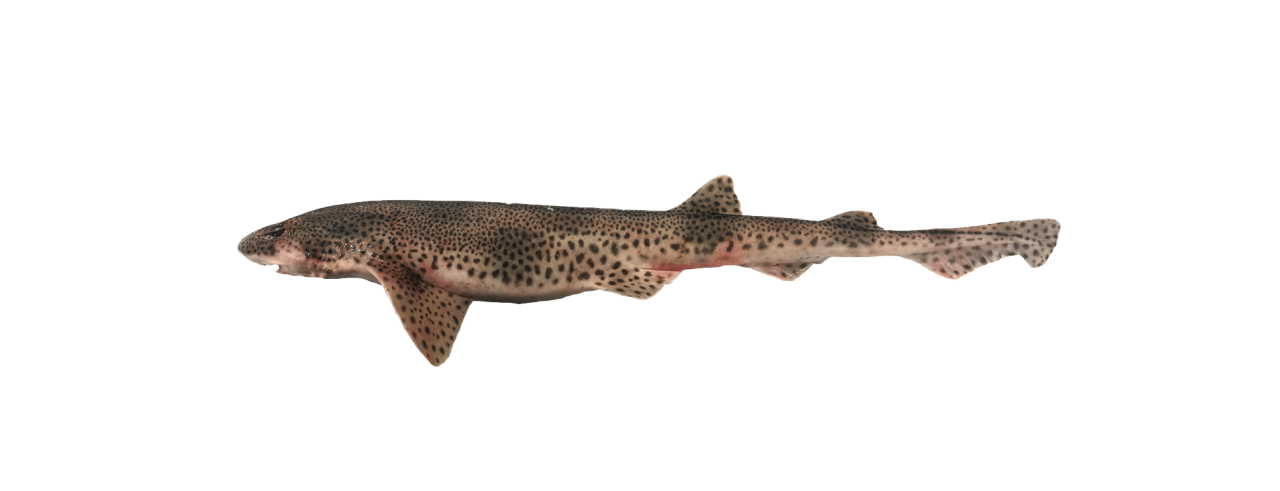
Small-spotted dogfish
The dogfish is a cartilaginous fish that belongs to the species of bottom sharks and related to cat sharks. They live from southern Norway to Senegal and in the western Mediterranean Sea.
In common parlance, they are sometimes called conger eels or dogfish.
The dogfish is a small, slender shark with a short, broad snout and numerous small dark brown spots on its light brown and gray skin. The skin on its belly is dirty white and rough, resembling sandpaper.
The dogfish should not be confused with the cat shark (Scylorhinus stellaris), as the latter is being rarer. The cat shark has larger and more widely spaced spots. In addition, the grooves of the nose of the cat shark are not connected to the mouth, while they are on the dogfish.
Source : Lekkervanbijons.be
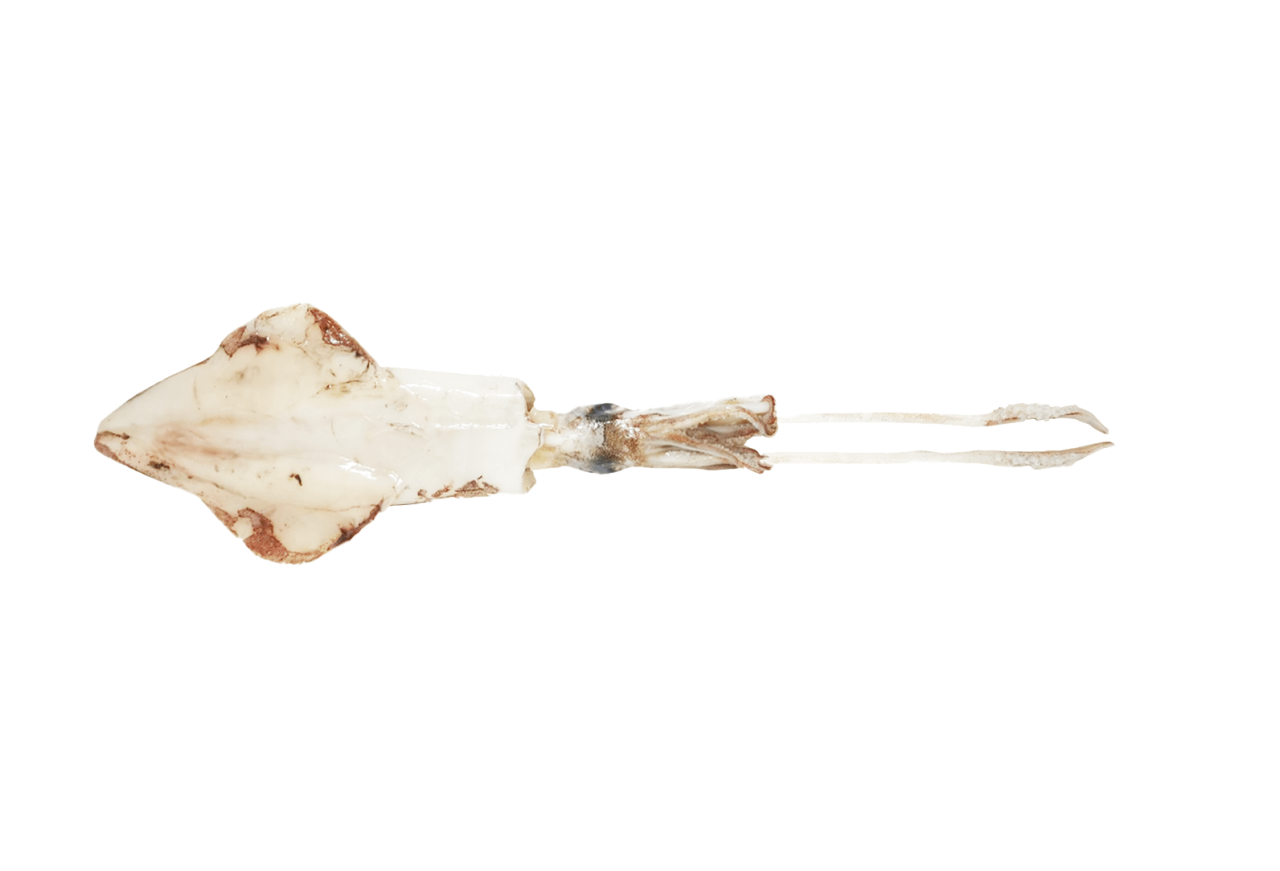
Squid
Unlike the octopus, the squid has ten limbs: eight arms and two longer tentacles. Squids get their name from their appearance. On their abdomen, they have two side fins in the shape of an arrow.
Most squid do not grow larger than 60 cm, averaging 30 to 50 cm in length. The squid is common in the North Sea and northeastern Atlantic Ocean.
Source: lekkervanbijons.be
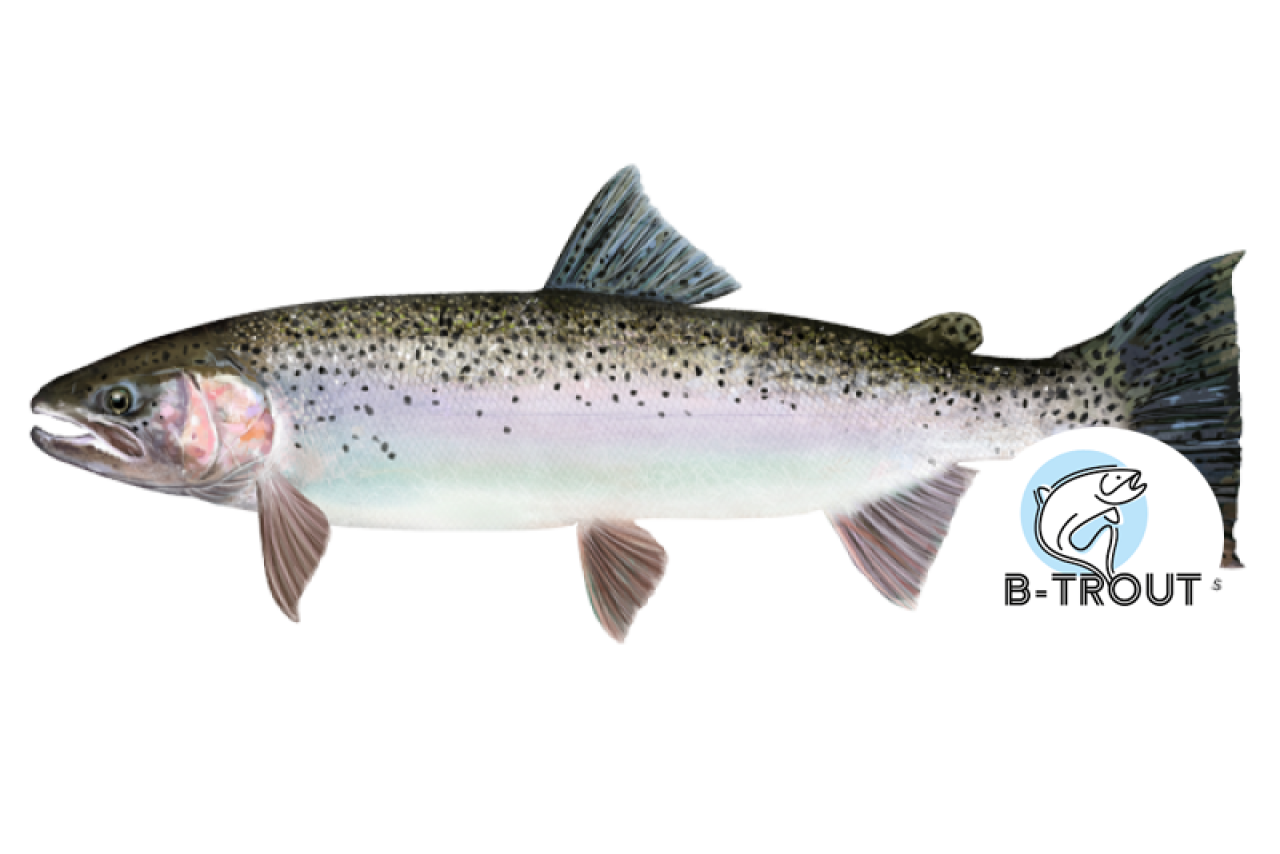
Steelhead (aquaculture)
Steelhead is the common name of the anadromous form of rainbow trout. Steelhead are native to cold-water rivers of the Pacific basin in Northeast Asia and North America. Like other sea trout, steelhead spawn in freshwater, the small fish then migrate to the ocean to forage for several years and the adults eventually return to their native rivers to spawn.
This beautiful fish is farmed from A to Z with passion and knowledge by fish farm B-trout in Beernem and this according to the strictest standards and highest quality requirements, resulting in a fantastic tasting end product.
B-trout uses sustainable, natural feed that imitates the natural diet of the steelhead. These foods include micro-algae that give the meat a beautiful deep red colour, promote the production of omega 3 fatty acids and encourage a delicate flavour.
A deliberate choice was made for non-intensive aquaculture in a closed system that mimics the natural environment of the fish, using biologically purified water in which there are no microplastics or antibiotics. There is more freedom for the fish to swim which reduces the risk of injuries and diseases.
B-trout's steelhead is available both fresh fish (processed by fish wholesaler Nijf) and smoked fish (processed by Brugse Visrokerij Alloo).
This creates the unique fact that the entire chain of this fish, from egg to finished product, is 100% Belgian!
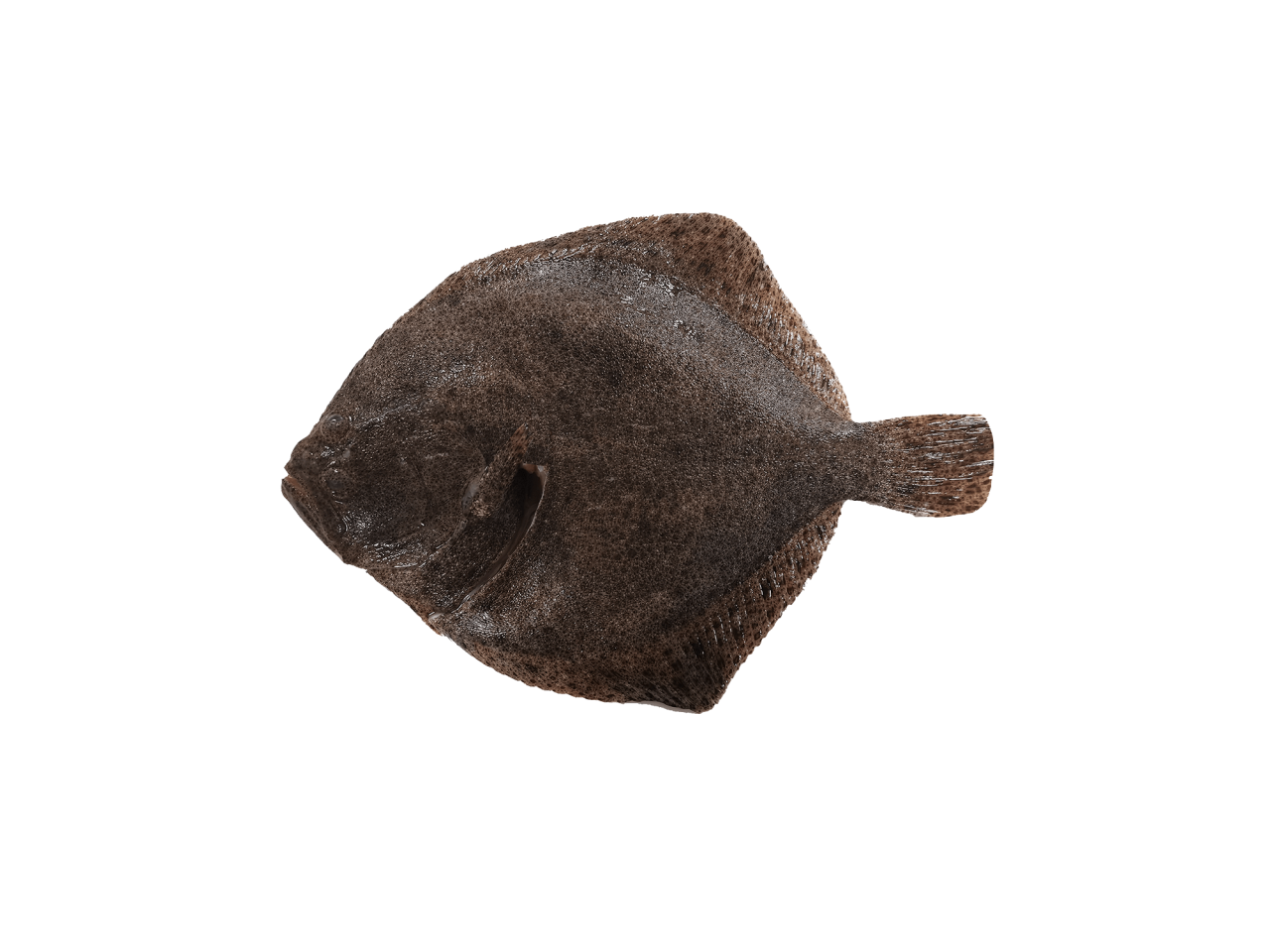
Tarbot
The turbot is a bony fish that belongs to the order of flatfish. They are found from Norway to Morocco, as well as in the Mediterranean Sea and the Black Sea.
Turbots have a diamond-shaped body (whereas brill is more oval-shaped). Their eyes, like those of brill and dab, are located on the dark green-colored left side of the body. This side has no scales, but instead has bony tubercles. The difference with brill is clear, as brill has a smooth, scaly skin. Adult fish measure between 35 and 52 cm in length, depending on their habitat. Turbot can grow up to one meter long and weigh up to 25 kg. The fish can live up to 25 years.
Source: Lekkervanbijons.be
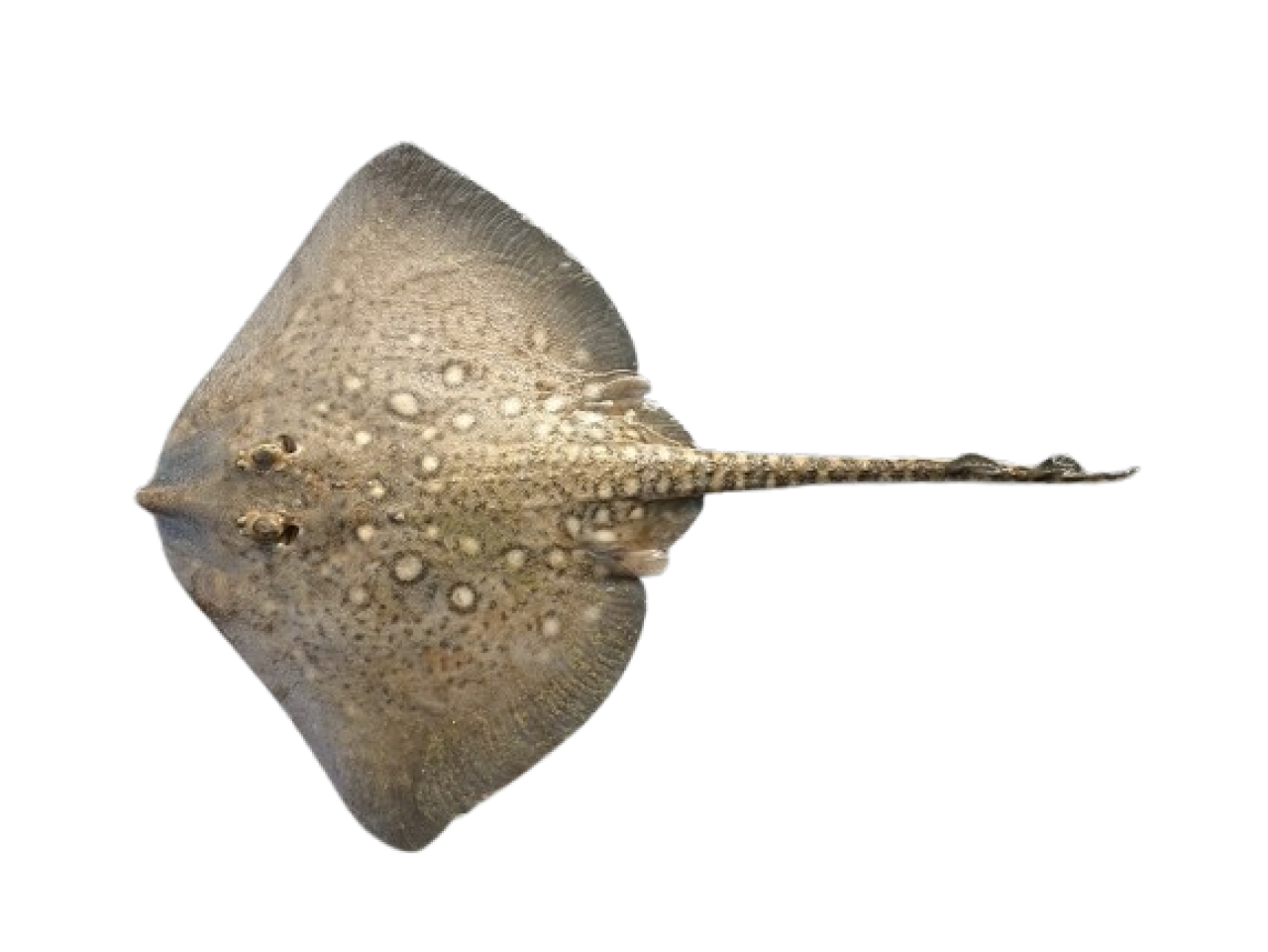
Thornback ray
Ray is a cartilaginous fish with a particularly large family. There are about 460 different species worldwide. For our fishermen, the thornback ray is the most important. Because of the good supply, you can usually find this species in our shops and restaurants.
They live from the Faroe Islands, Iceland and Norway to Namibia. You will of course also find them in the North Sea, not to mention in the western Baltic Sea, the Mediterranean Sea and the Black Sea.
Other well-known species are the blond ray (Raja brachyura), sand ray (Leucoraja circularis), bigeye ray (Leucoraja nevus) and the spotted ray (Raja montagui).
Together with plaice and sole, ray is an extremely important fish species for our fishermen. These three toppers account for the majority of the supply to our fisheries.
The thornback ray can be recognized immediately by its brown-grey color with dark and yellow spots. Characteristic are the spiky back, belly and tail. From the midline to the first dorsal fin is a row of 30 to 50 spines. The back ends in a long tail with pale bands with thorns scattered over the surface. An adult thornback ray measures 68-77 cm, the females can grow up to 130 cm.
Source: Lekkervanbijons.be